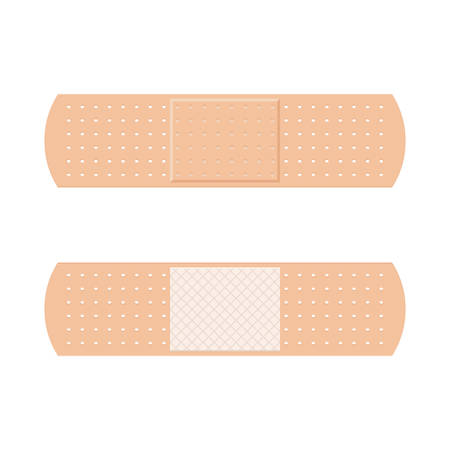1. Understand Your Skin Type
Knowing your skin type helps you choose the right waxing products and avoid irritation. Everyones skin reacts differently to waxing, so understanding your specific needs can make the process smoother and more comfortable.
Common Skin Types and Their Waxing Needs
Before you wax, its important to determine your skin type. Here’s a quick guide:
| Skin Type | Characteristics | Waxing Considerations |
|---|---|---|
| Sensitive | Easily irritated, prone to redness and breakouts | Use hypoallergenic wax; apply a soothing lotion after waxing |
| Oily | Prone to excess oil production and clogged pores | Cleanse thoroughly before waxing; use a lighter wax formula |
| Dry | Tends to be flaky and rough, may feel tight | Mild exfoliation beforehand; moisturize well after waxing |
| Combination | A mix of dry and oily areas on different parts of the body | Avoid overly harsh waxes; adjust pre- and post-care accordingly |
| Normal | Balanced moisture levels, not overly oily or dry | No special precautions needed; follow standard waxing steps |
If You Have Sensitive Skin…
If you have sensitive skin, waxing can cause irritation, redness, or even small bumps. To minimize discomfort:
- Select the Right Wax: Choose a gentle, hypoallergenic wax designed for sensitive skin.
- Avoid Harsh Ingredients: Stay away from fragrances and alcohol-based products before and after waxing.
- Pamper Your Skin: Apply aloe vera or a calming lotion post-wax to soothe irritation.
Tuning Your Routine to Your Skin Type
Your pre-wax routine should be tailored to your skin type. For example:
- If your skin is dry, hydrate it well in the days leading up to waxing.
- If your skin is oily, cleanse thoroughly but avoid using heavy creams before waxing.
- If youre prone to ingrown hairs, gentle exfoliation a day or two before waxing can help prevent them.
The Bottom Line on Skin Types and Waxing Prep
Your skin type plays a big role in how your body reacts to waxing. Identifying whether you have sensitive, oily, dry, combination, or normal skin allows you to choose the best products and techniques for a smoother experience.
2. Exfoliate a Day Before
Gently exfoliating your skin 24 hours before waxing is a key step in preparing for a smooth and effective hair removal session. Exfoliation helps remove dead skin cells that can clog hair follicles, reducing the chances of ingrown hairs and ensuring the wax adheres properly to the hair.
Why Exfoliation Matters
Regular exfoliation keeps your skin soft and prevents buildup that could make waxing less effective. By eliminating dead skin cells, you allow the wax to grip the hair more efficiently, leading to a cleaner and longer-lasting result.
Best Ways to Exfoliate
| Method | Description |
|---|---|
| Gentle Scrubs | Use a mild sugar or oatmeal scrub to buff away dead skin without irritation. |
| Exfoliating Gloves | A soft exfoliating glove can help slough off dead skin while you shower. |
| Chemical Exfoliants | A mild AHA or BHA exfoliant can dissolve dead skin cells without physical scrubbing. |
Avoid Harsh Scrubs
While exfoliation is essential, avoid using harsh scrubs or overly aggressive techniques that could irritate your skin. Redness, sensitivity, or microtears in the skin can make waxing more painful and increase the risk of irritation afterward.
Timing Is Key
The best time to exfoliate is about 24 hours before your waxing appointment. This gives your skin enough time to recover while still being prepped for optimal results.

3. Keep Your Skin Clean and Dry
Before you start waxing, it’s essential to make sure your skin is clean and completely dry. Any residue from lotions, oils, or sweat can prevent the wax from properly adhering to the hair, leading to uneven results or difficulty in hair removal.
Why Clean Skin Matters
Waxing works best on fresh, product-free skin. Oils and lotions create a barrier that makes it harder for the wax to grip the hairs, which can result in more pain and less effective hair removal.
Steps to Prepare Your Skin
| Step | Description |
|---|---|
| 1. Wash the Area | Use a mild cleanser and lukewarm water to remove dirt, oil, and sweat. |
| 2. Pat Dry | Gently pat your skin dry with a clean towel instead of rubbing. |
| 3. Avoid Moisturizers | Skip lotions and oils right before waxing to ensure proper adhesion. |
| 4. Use Powder If Needed | If your skin tends to get sweaty, apply a small amount of baby powder to absorb excess moisture. |
Avoid These Common Mistakes
- No Hot Showers Right Before: Hot water opens pores and can make waxing more painful.
- No Heavy Creams: Thick creams or body butters can leave behind residue that interferes with waxing.
- No Sweat: If you’ve just worked out, cool down and cleanse the area before waxing.
A clean and dry surface ensures the wax grips properly for a smoother and more effective waxing experience. Taking these steps will help minimize discomfort and improve your results!
4. Let Hair Grow to the Right Length
For waxing to be effective, your hair needs to be the right length. If its too short, the wax won’t grip properly, and if it’s too long, the process can be more painful. Ideally, your hair should be about 1/4 inch long for the best results.
How to Measure Hair Length
If you’re unsure whether your hair is at the right length, here’s a simple guide:
| Hair Length | What to Do |
|---|---|
| Less than 1/4 inch | Wait a few more days before waxing. |
| Around 1/4 inch | You’re good to go! |
| Longer than 1/4 inch | Trim slightly for comfort. |
Avoid Shaving Before Waxing
If you’ve been shaving, give your hair enough time to grow out before your waxing session. Shaving cuts hair at the surface level, making it too short for wax to grip effectively. It’s best to stop shaving at least two weeks before waxing.
The Importance of Proper Hair Length
The right hair length ensures that the wax adheres properly and removes hair from the root. This not only makes waxing more effective but also helps in achieving smoother skin that lasts longer.
5. Prepare for Potential Discomfort
Waxing can be uncomfortable, especially if its your first time or if youre waxing a sensitive area. However, there are ways to minimize the pain and make the experience more manageable.
Use a Numbing Cream
Applying a numbing cream about 30 minutes before your waxing session can help reduce discomfort. Look for products that contain lidocaine or benzocaine, as these ingredients temporarily desensitize the skin.
Take a Pain Reliever
If youre concerned about pain, consider taking an over-the-counter pain reliever like ibuprofen or acetaminophen 30 minutes before waxing. This can help reduce inflammation and make the process more comfortable.
Practice Deep Breathing Techniques
Staying relaxed can make a big difference in how much discomfort you feel during waxing. Try deep breathing exercises—inhale deeply through your nose, hold for a few seconds, and exhale slowly through your mouth. Focusing on your breath can help ease tension and distract from the sensation of waxing.
Additional Tips for Reducing Waxing Pain
| Tip | Description |
|---|---|
| Avoid Caffeine and Alcohol | Caffeine and alcohol can make your skin more sensitive, so try to avoid them before waxing. |
| Smooth Your Skin with Baby Powder | A light dusting of baby powder absorbs excess moisture and helps the wax grip hair better instead of sticking to your skin. |
| Choose the Right Time | Your pain tolerance may be lower right before your period, so schedule your waxing session accordingly. |
| Distract Yourself | Listening to music or chatting with your esthetician can take your mind off any discomfort. |
A little preparation goes a long way in making waxing a more comfortable experience. Follow these tips to minimize pain and enjoy smoother skin with less stress!

